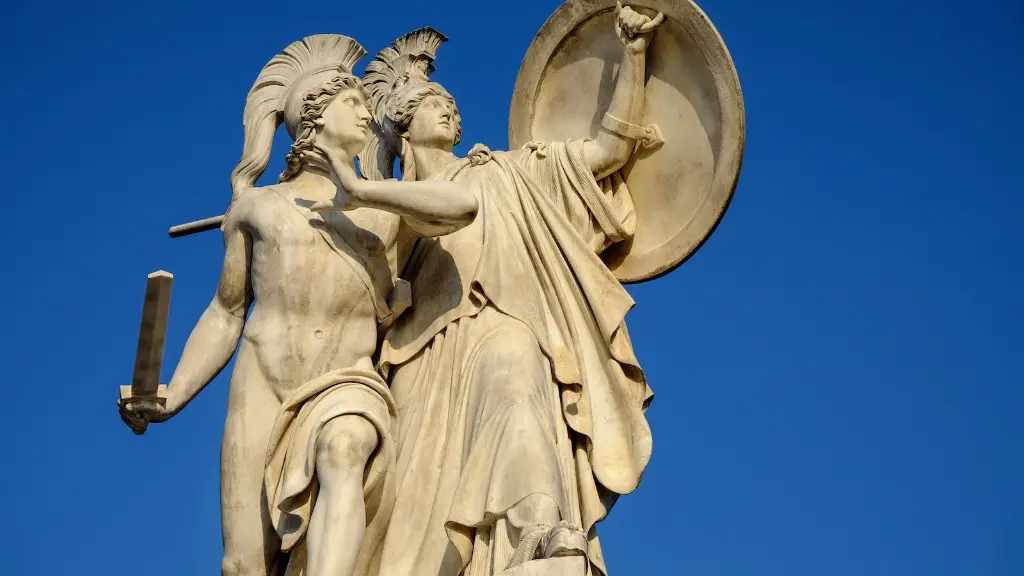Doctors in ancient Rome had a variety of titles made up of a mixture of Greek and Latin words. The most common title was “medicus”, which was derived from the Greek word “medanein”, meaning “to heal or cure”. Doctors were also referred to as “scholasticus”, which comes from the Latin term “scholasticus”, meaning “teacher”. These titles indicate that medical practitioners in ancient Rome had both a learning and a healing role.
Medical education in ancient Rome was extensive and rigorous. It was conducted with the help of Greek and Roman texts written by great thinkers and teachers such as Hippocrates and Galen. To give a student a full medical education, the texts had to be studied in detail. This was followed by an apprenticeship where the student learnt by observing the work of an experienced doctor.
The treatment methods used by Roman doctors were very advanced for their time. They used a variety of medicines derived from plants and minerals, as well as surgical procedures. They were also able to diagnose diseases by examining the patient’s pulse, urine, and stool. Roman doctors also developed techniques of bone-setting and wound management that were ahead of their time.
The quality of patient care offered by Roman doctors was generally good. They had a systems of charges and payments for their services. Some doctors were paid by the state under a system of “public payers”. However, this was rare, and most doctors were paid by their patients directly.
In addition to providing medical care, Roman doctors were often involved in the community in other ways. Many served in the army, where they were required to treat soldiers on the battlefield. Others were employed as teachers in medical schools, where they were expected to teach medical students and keep up with medical advances in the field.
Medical practitioners in ancient Rome were held in high esteem by the people. They were respected members of society and held positions of power and influence. They were thought of as wise men who could provide cures and advice. Roman doctors were often consulted by the emperor and other important people.
Overall, doctors in ancient Rome were highly skilled and held in high regard. They were involved in a variety of activities and made significant contributions to the field of medicine. Their expertise and dedication to the healing arts have helped shape the modern medical profession.
Role of Women Physicians
Although women in ancient Rome were largely excluded from the field of medicine, some women managed to make a name for themselves as healers. One such woman was Agnodice of Alexandria, a Greek midwife who practiced medicine in Rome in the first century BC. Agnodice is remembered for her bravery and commitment to helping women in need. She was also the first female doctor to be officially recognized by the Roman authorities.
Other female medical practitioners in ancient Rome included herbalists, midwives, and massage therapists. These women were highly respected in their communities for their healing abilities. Although female practitioners were not formally recognized by the medical establishment, they provided an important service to the people of Rome.
In addition to providing medical care, these women also served a vital role in spreading knowledge. By passing on their knowledge and expertise to the next generation of female healers, these women helped ensure that their craft was preserved and passed down to future generations.
Doctors without Borders in Ancient Rome
In ancient Rome, there were some doctors who dedicated their time to helping those in need. These doctors were known as “Medici sans Frontiers”, or “Doctors Without Borders”. These doctors provided free medical care to the poor and those living in remote and difficult-to-reach areas.
Their mission was to provide medical care to anyone who needed it, regardless of their background or status. These doctors not only offered treatment to their patients but also gave advice, taught them how to prevent illnesses, and provided emotional support. By doing this, they played an important role in improving the overall health of the Roman Empire.
One famous doctor without borders was Apsyrtus, who lived in the first century BC. He was a Greek slave who travelled around the Roman Empire providing free medical care to those in need. Apsyrtus is remembered for his selfless commitment to helping others and for his dedication to the healing arts.
Hospitals and Medical Institutions
In addition to private medical practitioners, ancient Rome also had a number of hospitals and medical institutions. These included temples dedicated to healing gods, such as Asklepios and his daughter Hygeia. These temples provided free medical care to anyone who needed it and the priests and priestesses were respected for their knowledge and skill in healing.
The Romans also had Temple of Rome and Augustus, which was a large and well-equipped hospital. It had a staff of doctors and nurses and treated a variety of illnesses and injuries. Other Roman hospitals included the Temple of Minerva and the Temple of Asclepius, both of which provided a variety of health services to the public.
The Romans also established a number of medical schools, which provided training to doctors and nurses. These schools taught students the basics of medicine and the latest medical techniques. They also provided students with the opportunity to work with experienced medical practitioners in order to gain experience.
Legacy of Roman Medicine
The medical innovations developed by Roman doctors and medical institutions have had an enduring impact on the practice of medicine. They were especially important for the spread of medical knowledge, as well as for the development of the modern medical profession. Roman doctors also helped create a system of ethics and professionalism which is still adhered to by modern medical practitioners.
The legacy of Roman medicine lives on to this day. Many of the medical instruments and treatments developed by Roman doctors are still used in modern medicine. The legacy of Roman doctors is also remembered in many of the terms used in the medical profession today. For example, the word “physician” comes from the Latin term “medicus”, meaning “medical doctor”.
Summary
Doctors in ancient Rome were highly skilled and respected members of society. They were experts in a variety of medical treatments, such as diagnosis, surgery, and herbal medicine. In addition to providing medical care, Roman doctors were also involved in many other activities, such as teaching and providing emergency medical care on the battlefield. Some female medical practitioners also managed to make a name for themselves in the field of medicine. There were also some doctors without borders who provided free medical care to the poor and remote areas of the Roman Empire. Lastly, the medical advances developed by Roman doctors continue to be used today.




